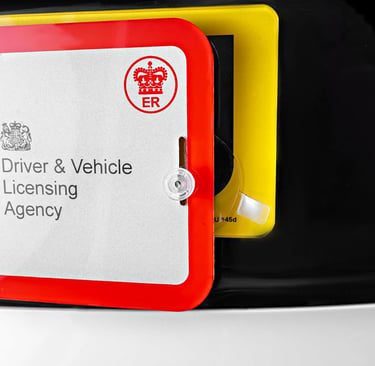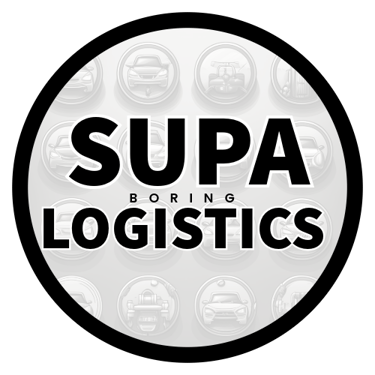Legal Guide for Trade Plate Drivers: Essential Laws to Follow


Trade plate driving is an attractive career for those who enjoy being on the road and want to work independently. However, trade plate drivers must follow strict laws to ensure safe and legal operations. This guide will walk you through the essential laws and regulations that trade plate drivers in the UK should know when collecting, transporting, and delivering vehicles.
1. Understanding Trade Plates and When They Can Be Used
Trade plates allow drivers to move vehicles on public roads without the need for individual tax and registration. However, they are only legally permitted for specific uses:
Permitted Uses: Trade plates are strictly for business-related driving, including vehicle delivery, testing, demonstrations, and movement to or from repair locations. They are not to be used for personal driving, commuting, or private journeys.
Displaying Plates: Plates must be securely displayed on the vehicle at both the front and rear. They must remain visible and legible throughout the journey. Failure to display trade plates correctly can result in fines and penalties.
2. Driving License Requirements
Trade plate drivers must hold a valid UK driving license appropriate for the type of vehicle they’re operating. Here are some additional requirements:
Category B License: This license covers vehicles up to 3,500 kg. Most trade plate drivers need at least a Category B license, which allows them to drive standard cars and vans.
HGV License: For larger vehicles over 3,500 kg (e.g., trucks or commercial vehicles), drivers must hold an HGV (Heavy Goods Vehicle) license.
Ensuring you hold the correct license is essential. Driving a vehicle outside of your license category is illegal and can result in penalties, license suspension, or invalid insurance.
3. Insurance Requirements
Insurance is mandatory when driving any vehicle on public roads, even with trade plates. Trade plate drivers must carry insurance that covers their activities. Typical coverage includes:
Motor Trade Insurance: This provides coverage for drivers who regularly handle, transport, and deliver vehicles for a business. It often includes comprehensive, third-party, fire, and theft options.
Policy Extensions: Policies may need extensions for specific vehicle types (e.g., higher-value cars or motorcycles). Make sure your policy matches the vehicles you drive to avoid gaps in coverage.
4. Rules for Collecting and Inspecting Vehicles
Trade plate drivers are responsible for ensuring the vehicle they collect is safe and legal for road use. Here are some key points:
Condition and Roadworthiness: Inspect the vehicle for any obvious defects that could compromise safety, such as issues with brakes, tires, or lights. Vehicles must be in a roadworthy condition before being driven.
Documentation: Obtain any necessary documents, such as proof of ownership and authorization for transport, before collecting the vehicle. Ensure you have the correct paperwork to verify that you’re authorized to handle the vehicle.
5. Adhering to Road Traffic Laws
While driving, trade plate drivers must follow all standard UK road traffic laws. This includes:
Speed Limits: Abide by posted speed limits and adjust your speed for road conditions. Exceeding speed limits can lead to fines, points on your license, or even disqualification.
Mobile Phone Restrictions: Using a mobile phone while driving is illegal unless you use a hands-free device. Even then, it’s advisable to keep phone use to a minimum.
Seatbelt Requirements: Seatbelt laws apply to all drivers, including trade plate drivers. Ensure that you and any passengers are properly buckled up.
6. Vehicle Excise Duty (Tax) Exemption
One advantage of using trade plates is exemption from Vehicle Excise Duty (road tax) on vehicles being moved temporarily. However, this exemption is conditional:
Temporary Use Only: Trade plates can only be used when transporting vehicles temporarily on public roads. If the vehicle will remain in use for an extended period, it must be taxed.
Logbook (V5C) Requirements: Ensure that the vehicle’s V5C (logbook) is updated with the new owner’s details if it’s a sale or permanent move.
7. Compliance with Working Time Regulations
Trade plate drivers are also subject to Working Time Regulations, which limit the hours drivers can work to prevent fatigue and ensure safety. Key requirements include:
Maximum Working Hours: Drivers should not work more than 48 hours per week on average (though individual agreements may allow up to 60).
Rest Breaks: A minimum 20-minute break is required after six hours of driving. Additionally, drivers should have 11 consecutive hours of rest within each 24-hour period.
Driver’s Log: Some employers may require trade plate drivers to keep a log of hours worked and rest breaks taken. Even if it’s not mandatory, keeping a personal log can help ensure compliance with legal limits.
8. Safe Delivery and Handover Procedures
Upon delivery, the driver should follow specific steps to ensure a smooth and lawful handover:
Inspect the Vehicle: Perform a final inspection to ensure the vehicle is in the same condition as collected, and note any issues on a delivery report.
Documentation: Obtain the recipient’s signature and provide any necessary documents, such as inspection forms or service records.
Securing Trade Plates: Once the vehicle is delivered, remove your trade plates before leaving the delivery site, as they should not remain on a vehicle after handover.
Final Thoughts
Trade plate driving can be a rewarding career, but it comes with specific legal responsibilities. By understanding the rules around trade plate usage, insurance, vehicle inspections, and road traffic laws, you’ll be well-prepared to navigate each journey legally and safely. Staying compliant isn’t just about avoiding penalties; it’s about ensuring a professional and trustworthy service that clients can rely on.
Whether you’re new to trade plate driving or an experienced driver, staying updated on legal requirements is essential to thriving in this industry. Following these guidelines will help you stay on the right side of the law and enjoy a successful career as a trade plate driver.
